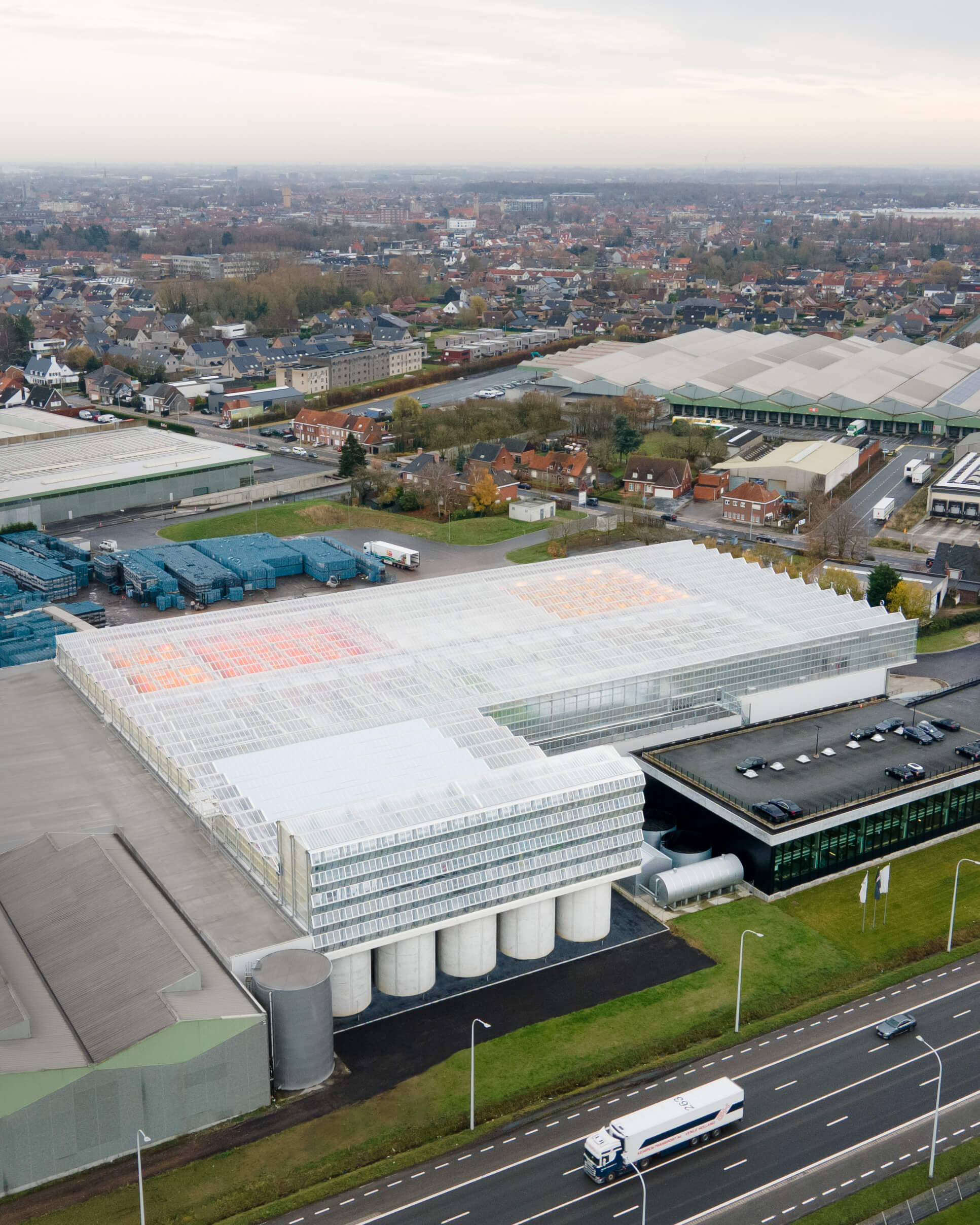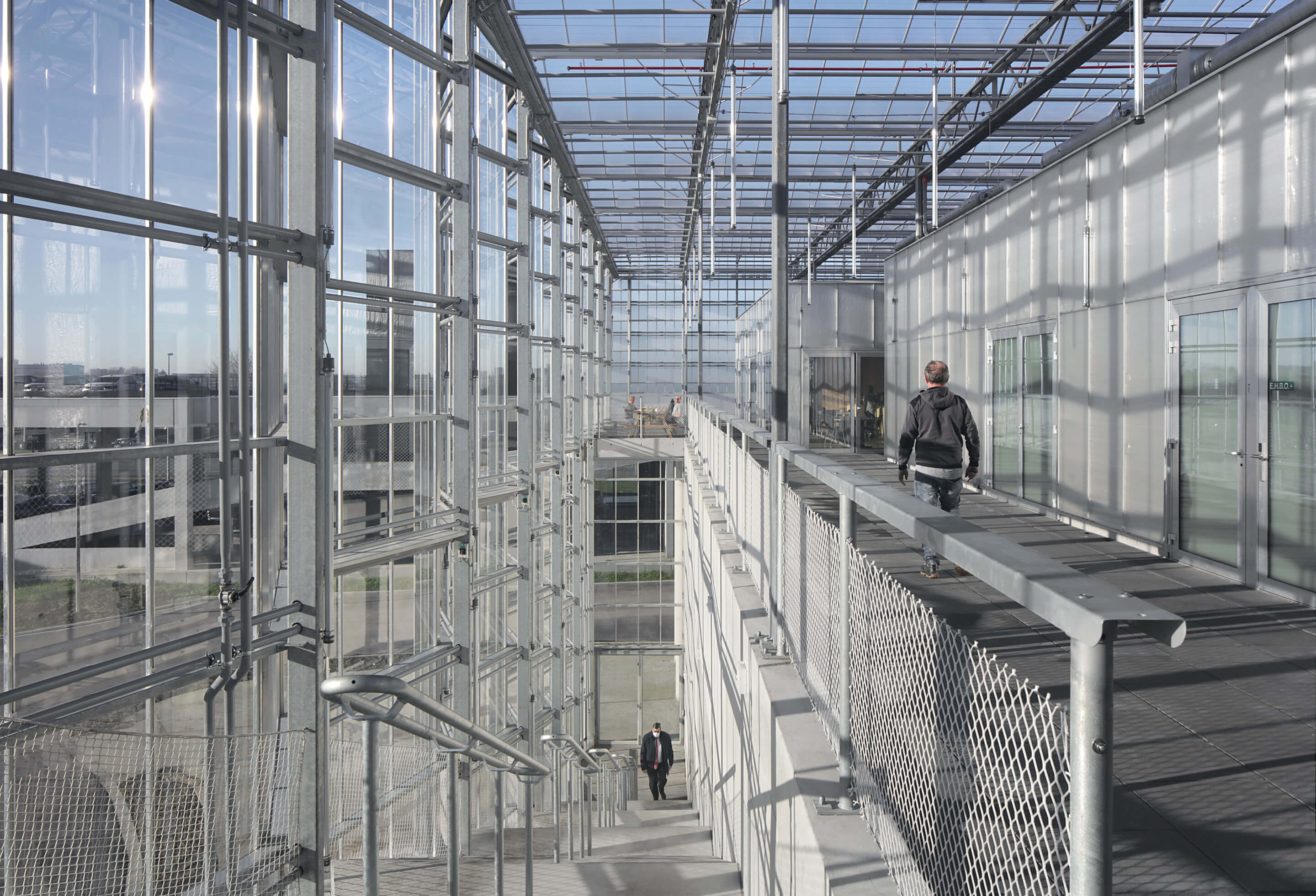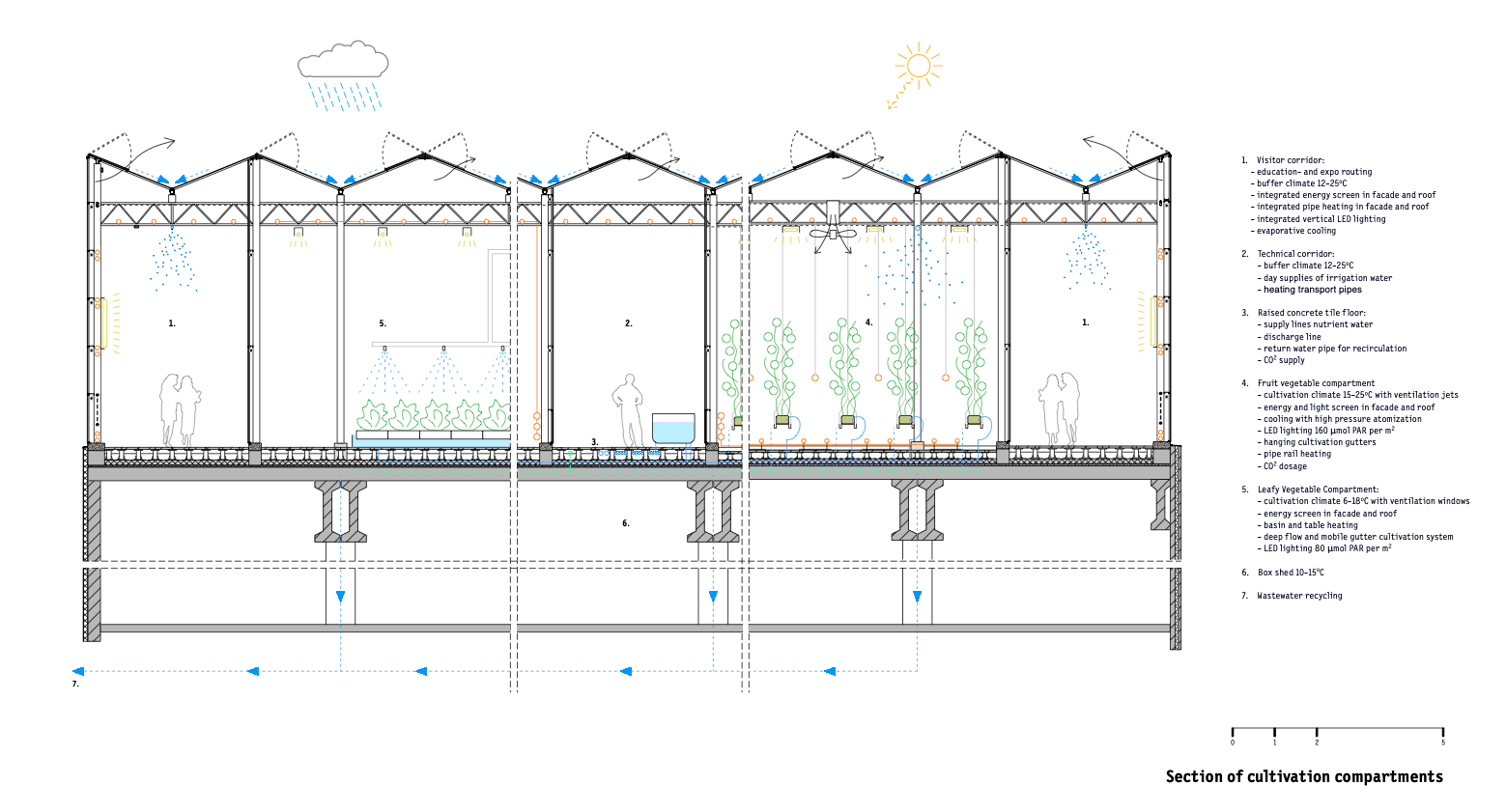- Architect
META architectuurbureau and van Bergen Kolpa Architecten - Location
Roeselare, Belgium - Completion Date
September 2021 - Diffuse Glass
Vetrasol
- Greenhouse Roof
BOAL - Screens
Phormium - Stability and Technical Studies
Tractebel - Cultivation Techniques Studies
Wageningen University & Research, BU Greenhouse Horticulture - Greenhouse Studies
Smiemans Projects

The facade and roof were a standard aluminum greenhouse system with diffuse glass. Optimizing for agricultural production, and working with researchers at Wageningen University, the design team chose diffuse glass with a particularly high haze factor, increasing crop yields by up to eight percent by allowing sunlight to better reach the plants. An entrance staircase moves visitors to the central square of the greenhouse’s interior.

The facade along the building’s entrance is comprised of vertical glass bay windows, with screens that provide sun shading and reduce energy consumption. According to van Bergen Kolpa Architecten owner Jago van Bergen and managing partner Niklaas Deboutte of META architectuurbureau, “the screens can be controlled in two independent directions, rotating with the sun from east to west, so that half of the facade always remains open and transparent to view,” a move that maintains the public-facing character of the structure. Furthermore, pipes for the greenhouse were integrated through the steel facade columns on this face of the building.

On the west side of the facade, the greenhouse’s horizontal construction provided significant exposure to sunlight for crop growth, and reflection-free views from the ground level. The facade on this side rose twice the height of the other faces of the building, providing spaces for vertical cultivation and storage for rainwater collected from the roof. The two cantilevered faces of the building owe their “striking appearance to the expressive, faceted façades in transparent glass,” said van Bergen and Deboutte.

Mounting the greenhouse atop an existing concrete structure was a challenge, particularly for a team that values sustainability. The bearing lines of the steel structure had to align with the concrete structure, and given the need to slope a greenhouse roof, the steel structure was mounted at a slope. An elevated, flat concrete-tiled floor was applied after, and covers supply lines for nutrient water, a discharge line, a return pipe for water circulation, and the carbon dioxide supply. Adjustable feet were designed for the base of the steel columns, allowing for ten centimeters (four inches) of expansion per hundred meters of facade in order to account for expansion and contraction between the summer and winter seasons.

The most impressive aspect of Agrotopia is its self-containment. Run-off from irrigation is recycled, allowing for a fully contained system, and surplus heat from a waste incinerator elevates the temperature of the interior. The spaces through which visitors circulate are surrounded by a “buffer climate,” that also includes offices and meeting rooms. The temperature of the public spaces is controlled via evaporative cooling when thermostat would otherwise become unreasonable on hot days. The designers described the climate control as a process of “circular symbiosis with the city.”





